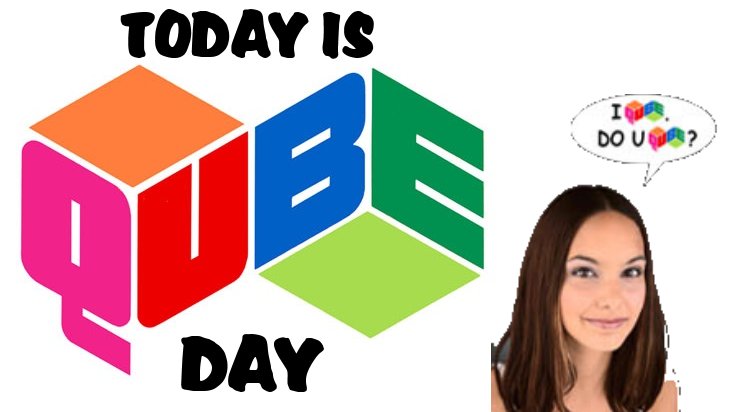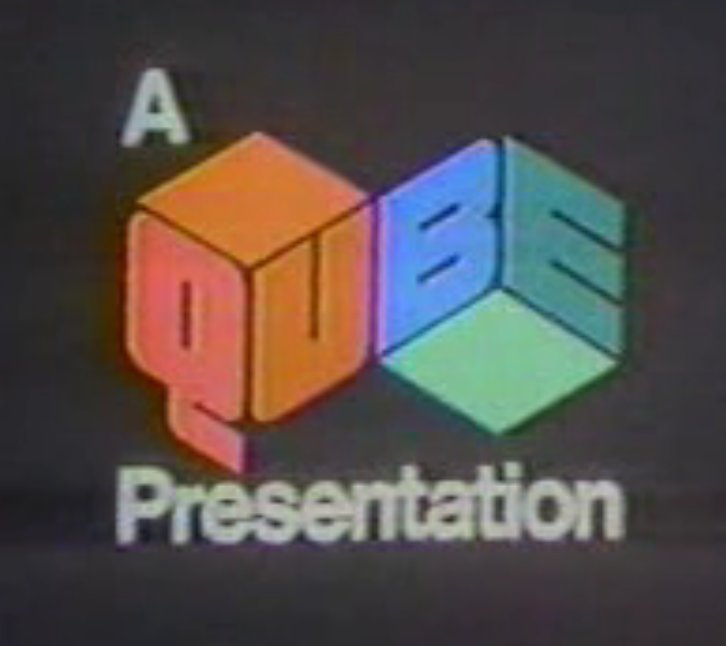

QUBE was a cable television experiment that launched in Columbus, Ohio in 1977. Many now-common features of cable that would not become officially "modern" for decades originated on QUBE way back when cable itself wasn't common. Several major cable networks also got their start on QUBE. It even had state-of-the-art interactive features that haven't been seen since. And I'll bet you've never heard of it.
In the mid-70's, Warner Communications chairman Steve Ross stared at the sluggish pace of growth for the company's infant cable system and wondered what could be done to make people more interested. At the time, only a handful of networks were cable-exclusive and the only benefit to having cable TV was not having to adjust the giant antenna to get local channels clearly. He hired a few executives to surround himself with and together they brainstormed possible other uses for cable that would interest people. Ross had stayed at a Japanese hotel recently and discovered their closed-circuit TV system was somewhat interactive. He now wanted the same technology implemented in a cable system.
Ross contacted Pioneer, the makers of the hotel's system, and tasked them with creating a two-way coaxial cable TV box. The result of their project was QUBE test-launching in Columbus--the world's first interactive cable service. Keep in mind the Atari 2600 had just come out, and to most people, that was as high-tech as "interactive" got. How was QUBE interactive? It came with a giant remote which you could use to play games, view the weather forecast, check the prices at all the supermarkets in the Columbus area, participate from home in town meetings and public auctions, and even vote instantly on polls the programs conducted live. This last feature was used in most of QUBE's live telecasts, enabling viewers to literally play along with game shows like "How Do You Like Your Eggs?" In a sense, QUBE was a crossbreed between television and the yet-to-happen Internet.
But this wasn't the first instance of interactive TV.
| One of the first television programs to encourage audience interaction was Jack Barry's Winky Dink & You, a children's show broadcast from 1953 through 1957 on CBS. The interaction was created through the use of cellophane overlay that children could buy at local stores and then attach to the television set. In the program, the cartoon character Winky Dink encountered many problems, such as being chased to the edge of a cliff by a tiger. Viewers were then asked to help Winky Dink escape from the tiger by drawing a bridge on the cellophane overlay. |
Oh well. Can't be first to everything.
One major idea Ross had was a special channel that would play uncut commercial-free movies, which you would pay to watch. Yup -- QUBE gave birth to pay-per-view. It offered ten different movie channels, unscrambled -- but with a catch. QUBE didn't need to scramble the movies because it was wired to your house and knew if you were watching one. If you didn't change the channel within two minutes, you were instantly charged for a movie. Obviously, QUBE wasn't something you could leave the kids alone with. Especially since the adult channel was also unscrambled.
This ability QUBE had to communicate with homes left some uneasy, and sprouted public concern that this was the beginning of George Orwell's grim 1984 forecast (after all, 1984 wasn't far away) or maybe even Skynet. QUBE's interactivity abruptly ended in 1985 when Sarah Connor blew it up.
| But before then, videoholic and
Betamax collector Ray Glasser made a trip to Columbus in
January of 1978 to capture the phenomenon via the equally
new and scary Home Video Recording Machines. If Glasser
hadn't done this, there might be no footage of QUBE's
existence at all. (Actually there is one other person with a large stockpile of archived QUBE material, but he won't let you see any of it unless you can prove you worked for QUBE. What's that about??) |
QUBE Demo Video - January, 1978 - part 1 of 6 Uploaded by videohollic |
QUBE Demo Video - January, 1978 - part 2 of 6 Uploaded by videohollic |
The actual Qube footage starts here --
Part 1 is 10 minutes of exposition. QUBE had thirty
channels; unheard of in 1978. Unfortunately Glasser
skipped over recording the Pinwheel Channel, because he
figured "it's kiddie stuff, nobody will be
interested." This is the single biggest mistake he
made. The Pinwheel Channel is one of the few networks
that not only outlasted QUBE but is still on today as one
of the most-watched cable networks of all time. When it
went national, it changed its name to NICKELODEON. Note that the other guy who wants to keep all his QUBE stuff to himself has plenty of Pinwheel footage. He's even got out-takes, presumably of Plus and Minus swearing or something. Go figure. |
| "Flippo's Magic Circus" is your typical low-budget clown-related
entertainment show, with one twist: QUBE Interactivity.
Within this clip, you'll get a good example of how QUBE
put the remote to use. I didn't bother embedding part 4 because it's all demonstrations of QUBE's text-based channels (remember those things?) If you're really curious and don't mind the boredom, click here. |
QUBE Demo Video - January, 1978 - part 3 of 6 Uploaded by videohollic |
QUBE Demo Video - January, 1978 - part 5 of 6 Uploaded by videohollic |
Part 5 starts with more text but
eventually shows what QUBE's PPV channels were like -- or
as much as he could show without paying. Another channel Glasser stupidly skips is "Sight on Sound." This station was music-related and showed footage of rock bands -- concerts, promotional videos from the record companies, and TV appearances. If you haven't already guessed, this was MTV, only before music videos were made with enough frequency. QUBE also invented the infomercial, making them a blessing and a curse. |
Some of QUBE's more unsuccessful and bizarre inventions, not captured by Glasser and never to happen again, included "Lulu, the World's First Interactive Soap Opera" (geez, I wanna see this) and "Video Comics," a Pinwheel/Nickelodeon program consisting of comic books one frame at a time with cheesy narrative voices. Guess which one of the two QUBE archive owners has entire episodes of both? The one who won't share.

In the end QUBE never panned out, not from lack of interest, but because the cost of maintaining the interactive portions of it were just too much. The service ended at a loss of over 30 million dollars. Warner Bros. could have had both Nickelodeon and MTV if QUBE had been more successful, but it was not and the resulting debt forced them to sell their most popular channels to Viacom to make up the difference.
The cable industry wishes now that they'd kept the two-way communication option, though. QUBE was able to determine what its most popular channels and programs were through a few simple button pushes, as opposed to a messy and inaccurate Nielsen survey. TV execs would kill for this now. (Then again, it would also prove once and for all that nobody watches ads.)